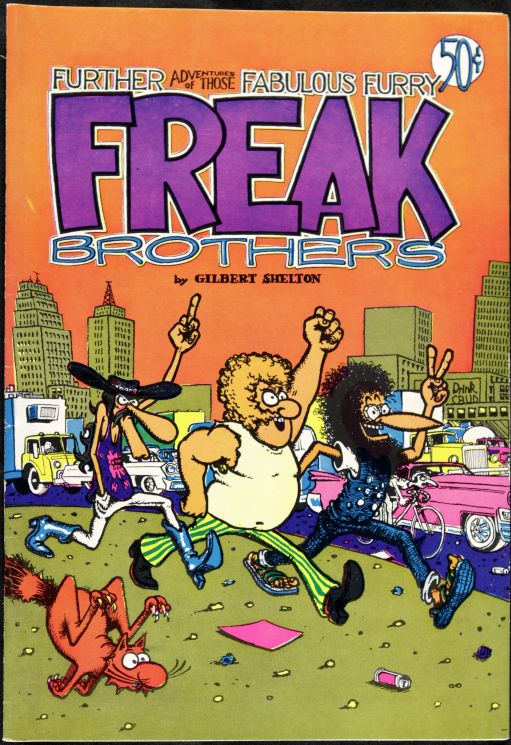I’m of the opinion that comics have always had depth. That’s not to say all comics all the time, in fact we live in a time with plenty of shallow comics (my own web comic included!) But back in the early days of comics, anything with depth was the minority. For most of the 20th century, that was the case. Withe rare exception, comics lacked anything beyond the basic gag books. Which makes sense, because they were marketed toward kids. But then something changed. In the last part of the last century, comics began to grow. I can’t say I can pinpoint this transition, but I’m writing today to categorize some of the thoughts I have on this.
I think that many people will look to a specific year to highlight the changing of how comics were made and received: 1986. Why 1986? Because that’s the year that Watchmen, the Dark Knight Returns, and Maus came out. That is a pretty hard year to beat. These are indeed books that helped to change the perception of comics, as they are among the most well made comics ever produced. The sophistication of Watchmen is talked about to no end, while Dark Knight Returns relaunched Batman and is largely responsible for how we see him today. And of course Maus packed emotion and darkness into every page, showing that the comic could be a medium to tell even the most grim stories. I’m sure that everybody working in comics today read these books when they were growing up and, in some way or another, it shaped them into the creators they are today. And while this can be argued as the most influential year for comics, I don’t think it’s the only factor that lead to comics becoming what they are.
While the 80s were a huge factor for comics, with the indie Mirage Publishers showing that the little guy can do it with a little book called Teenage Mutant Ninja Turtles, I think we have to take a step even further back. Let’s look at 1961. I know, that’s awfully specific, but something kind of important happened that year:

Stan Lee and Jack Kirby put out the first issue of Fantastic Four. This was a landmark comic. It would help launch the Marvel age, but it also showed us a different sort of super hero. This was a family, and they had the problem of families. They bickered and, to the reader, were more relocatable than someone like Superman. Perhaps this seems rudimentary to you, but at the time, this was a HUGE in comics. Sure, it might seem like common sense to make superheros like us, the lowly reader, but that’s only because this worked so well. This book changed the way we saw super heroes. They were no longer material for modern day fables, or escapism; they were human, too (uh, figuratively speaking for a lot of them.) The waves this sent across the comic book world would no doubt reach those readers who would grow up to create comics in the 80s, who would go on to influence those creators working right now.
But what about beyond those comics? There was, in the late 60s and early 70s, an underground comix (yes, with an x) movement in America, with R. Crumb being probably the most famous underground cartoonist. While these books might not possess the sophistication of Watchmen, they did something equally important: they shirked the confines of what was socially acceptable. I have read quite a few Underground Comix, and they will surly make some people blush, even all these decades later. These creators wanted to challenge the status quo of the current comic book, and by doing so, showed future creators that they didn’t always have to stay in the lines. Through their excessive sexual content, language, and mature situations (A LOT of drugs) they showed that comics weren’t all superheroes and kid’s funnies. They showed, by going to extremes, the maturity that could be held in those panels.

Many of these creators, were in turn, influenced by EC comics and Mad Magazine. Writers like Kurtzman gave the material to the angry youth who turned around and made their own comics, shaking off any of the norms comics were known for.
Do you catch my drift here? While comics continue to get more complex, I can’t point to a singular event that led us here. It’s all a cycle of who influenced who, and what those people would go on to add. The conditions were right in 1986 because of all that had come before (plus everyone seems pretty bleak when they talk about the 80s). And after that lighting rod of a year we got better and better comics. There were always good comics, but now there are so many good comics, not defined by any industry wide standard of what a comic “should be.” 1986 gave way to Vertigo Comics (Y the Last Man has one of the saddest scenes in ALL of comics, period). 1986 led to Image comics, with all of its innovation. But many factors paved the way to 1986. While things have certainly changed on a broader scale in the last few decades, we should remember that there were always those creators testing the waters.
This seems like a bit of simplification on my part, but these are thoughts I’ve had, and I think I’ve put them in some sort of order. Just remember, the next time you hear someone shocked about the quality of a comic, comics are great, they have been, and its just that surprised bystander who is out of touch!
Now, I can’t wait to see what comics we’ll get in the future!


Brilliant! You must compile this into a book! Every post I learn something new!
LikeLiked by 1 person
Thank you, you humble me! Maybe I will collect these writings somewhere 🤔
LikeLike